These battleground states will decide our next president
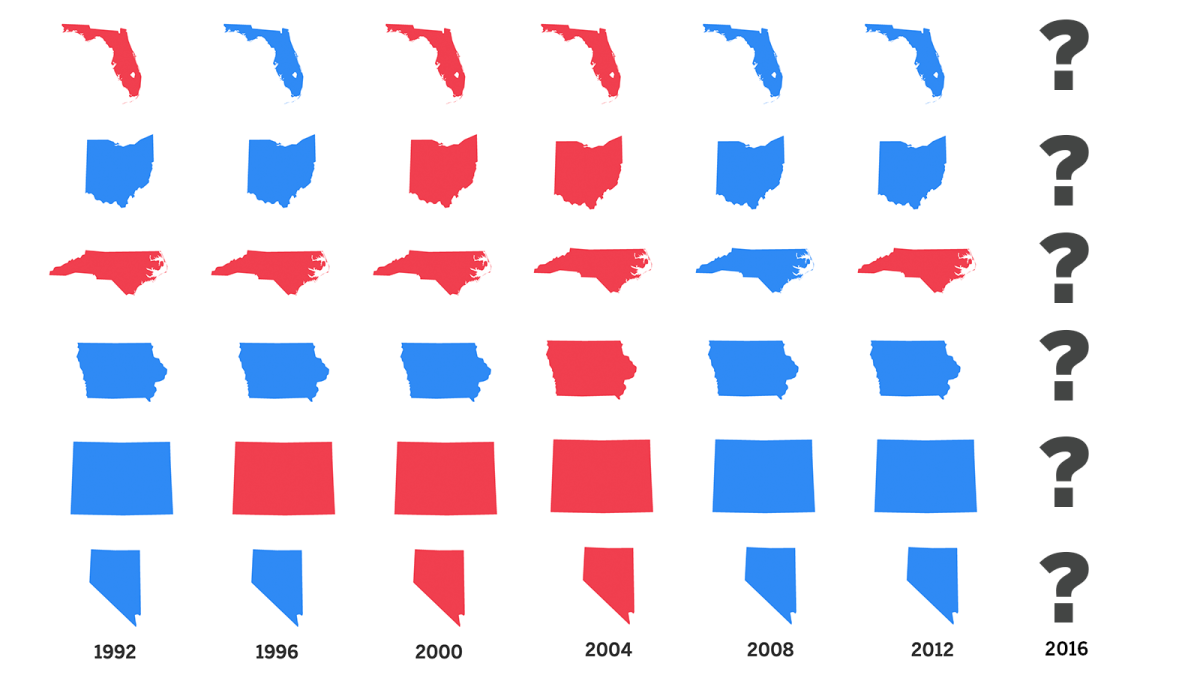
- Share via
This year’s presidential race will be won or lost in a handful of states that have swung between Democrats and Republicans over the years. Here’s our guide to the battlegrounds and how their political landscapes could hand them to either Hillary Clinton or Donald Trump.
For each state we've included the estimated percentage of the electorate that is white (a group that favors Trump overall), the percentage of white college-educated voters (a subset typically won by Republicans but now leaning toward Clinton) and the results in 2008 and 2012. The figures come from the Cook Political Report.
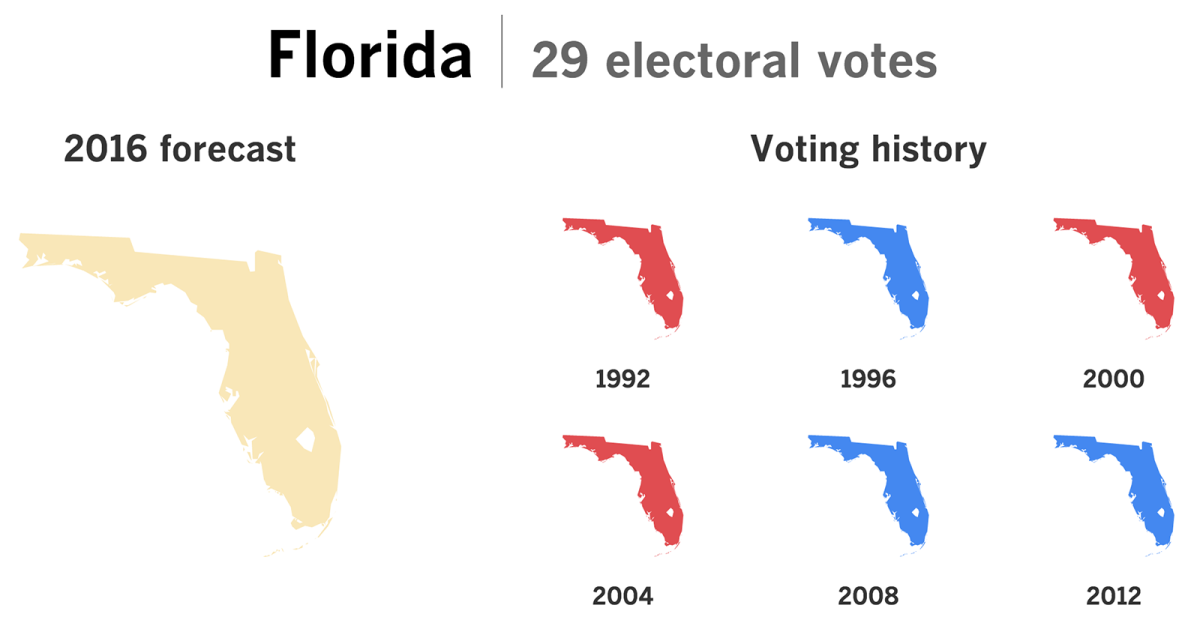
Florida is where close presidential contests are won or lost, sometimes by razor-thin margins. (See: Bush vs. Gore and the hanging chad).
There are signs that Clinton is positioned to edge out a victory here. For starters, the state’s significant Latino population is changing — there are more Puerto Ricans, who often lean Democratic, and fewer Cuban Americans, who are more reliable Republican voters.
Could Trump still win here? The part-time Floridian, whose Mar-a-Lago estate in Palm Beach has been the site of numerous campaign events, needs turnout among black and Latino voters to lag behind previous elections.
Influx of Puerto Ricans could be game-changer in country's biggest swing stateTrump's climate science denial clashes with reality of rising seas in Florida
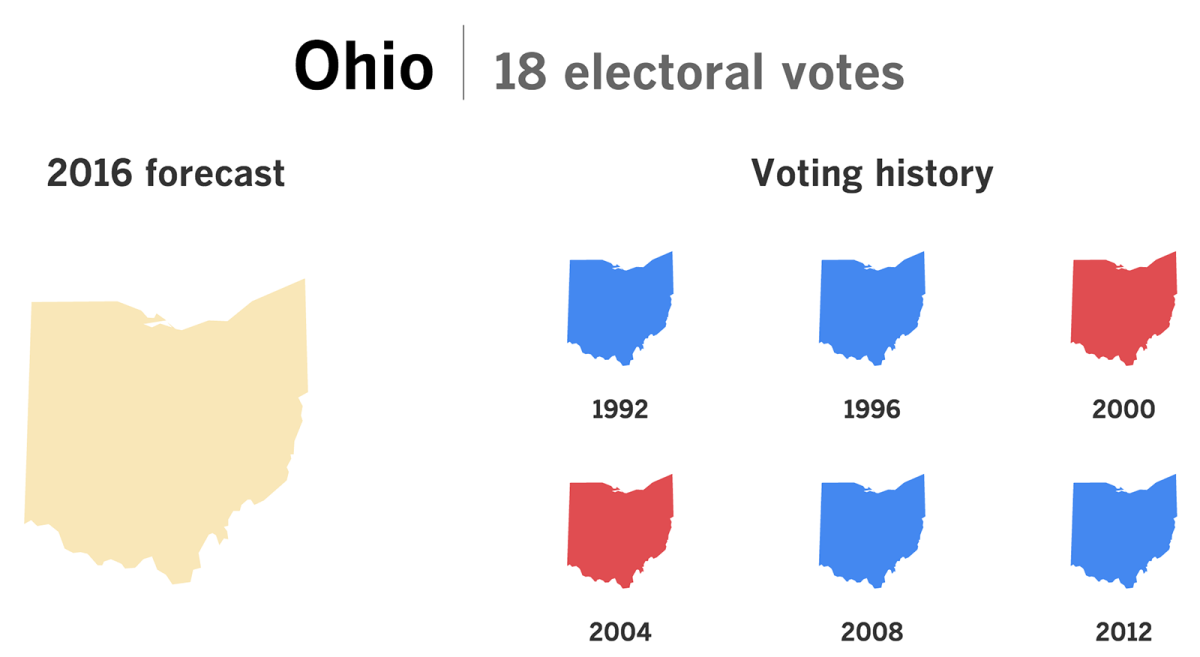
Ohio has a well-earned reputation as a political bellwether — it’s voted for the winner in every presidential contest except one since 1944.
But this year could be different. First, the state’s population is less representative of the nation than before, becoming older and whiter as the rest of the country diversifies. That should be a boost for Trump.
However, he’s been unable to unify the state’s Republican Party around his candidacy, and not even the state’s popular governor, John Kasich, voted for him.
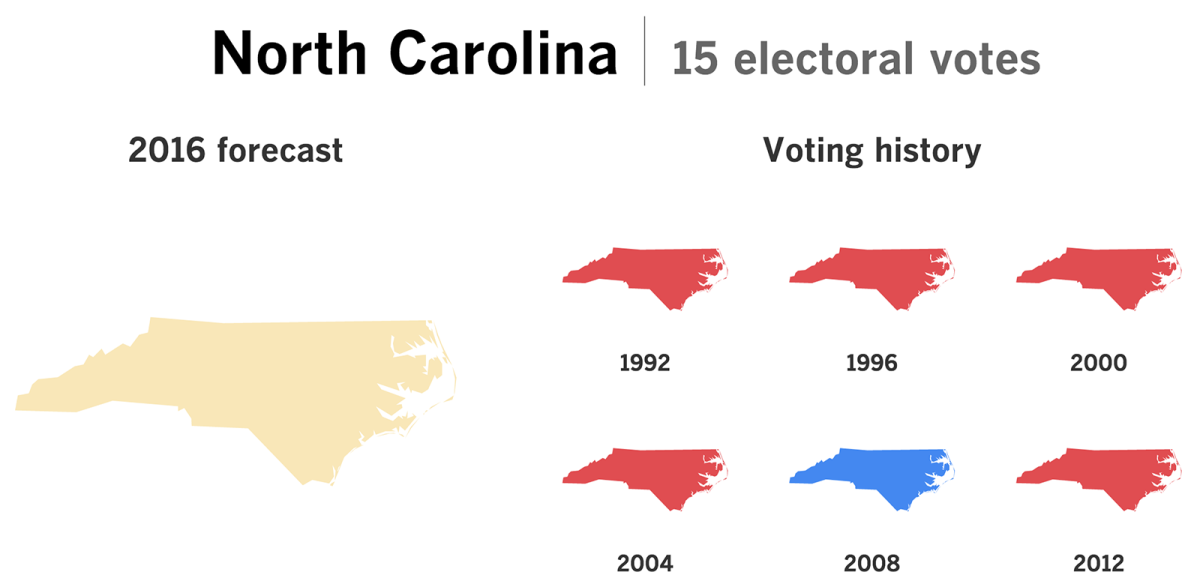
North Carolina tends to be out of Democrats’ reach in presidential elections — Obama won, barely, in 2008, then lost in 2012. But Clinton seems intent on turning the state blue with the help of high-profile supporters such as President Obama and First Lady Michelle Obama.
A major issue has been protests in Charlotte after police fatally shot a black man, pulling the city into a nationwide debate over race and criminal justice. It’s possible the political ripples could benefit Clinton, who has pushed for policing reforms and is counting on strong support from black voters.

As one of the whitest states in the country, Iowa is fertile terrain for Trump, who has struggled with black, Latino and Asian voters. He could also benefit from a united Republican front that has eluded him in some other battlegrounds.
Clinton doesn’t have a strong track record in the state. She lost the state’s first-in-the-nation caucuses in 2008 when she ran against Obama, then narrowly edged out Bernie Sanders this year.
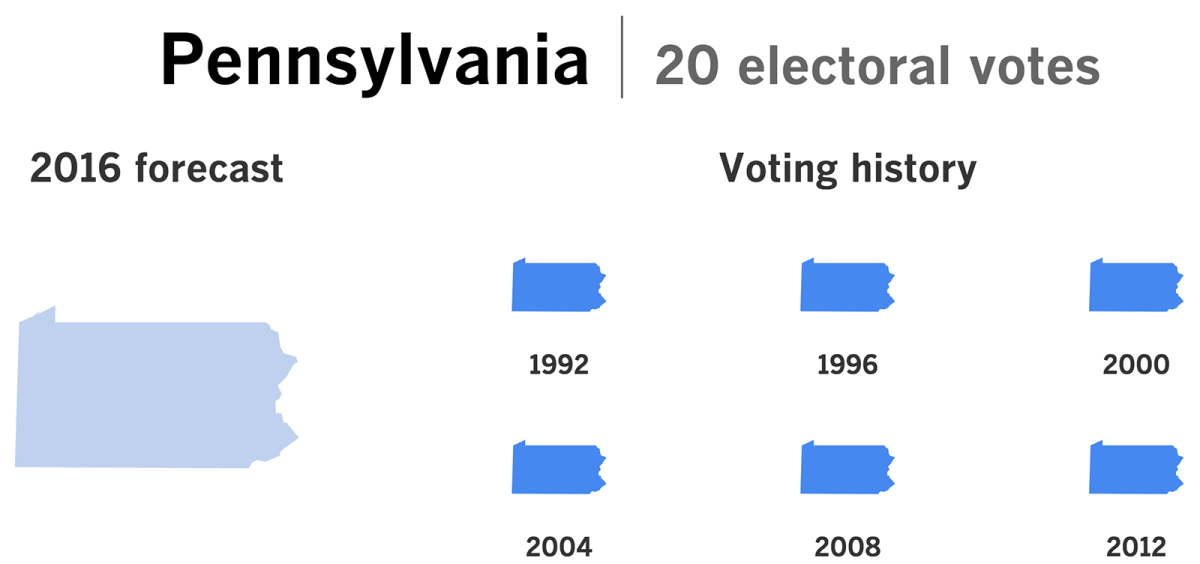
Pennsylvania has been a blue state for more than two decades,but there were concerns among Democrats that Trump could boost his numbers with white, working-class voters.
That doesn’t seem to have materialized, and Clinton has maintained a strong base of support among black voters in places such as Philadelphia. The city is such a Democratic bastion that Mitt Romney didn’t earn a single vote in 59 precincts in 2012.
In addition, Clinton’s campaign has set its sights on the Philadelphia suburbs, where Republicans are usually more competitive but Trump has struggled.
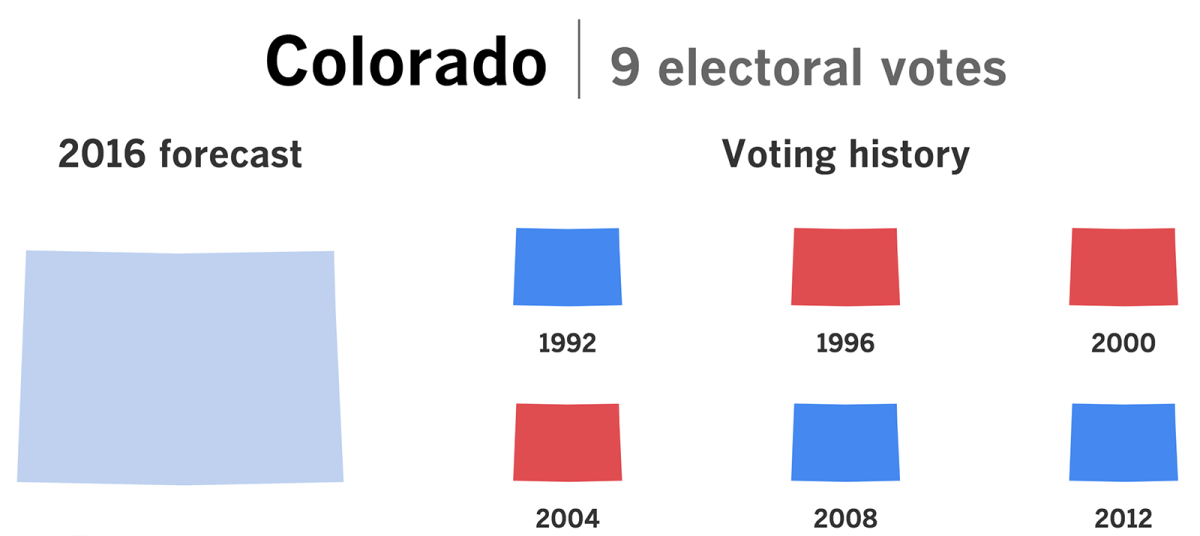
It wasn’t long ago that Democrats were ready to write off Colorado. But the state has been rapidly transformed by an influx of Latinos and young, highly educated transplants — demographics that make it a much safer bet for Clinton.
Also hurting Trump is his low support among women disgusted with his sexist remarks. Even though he may be able count on support from conservative strongholds such as Colorado Springs, the growing suburbs around Denver could be slipping out of Republicans’ reach.
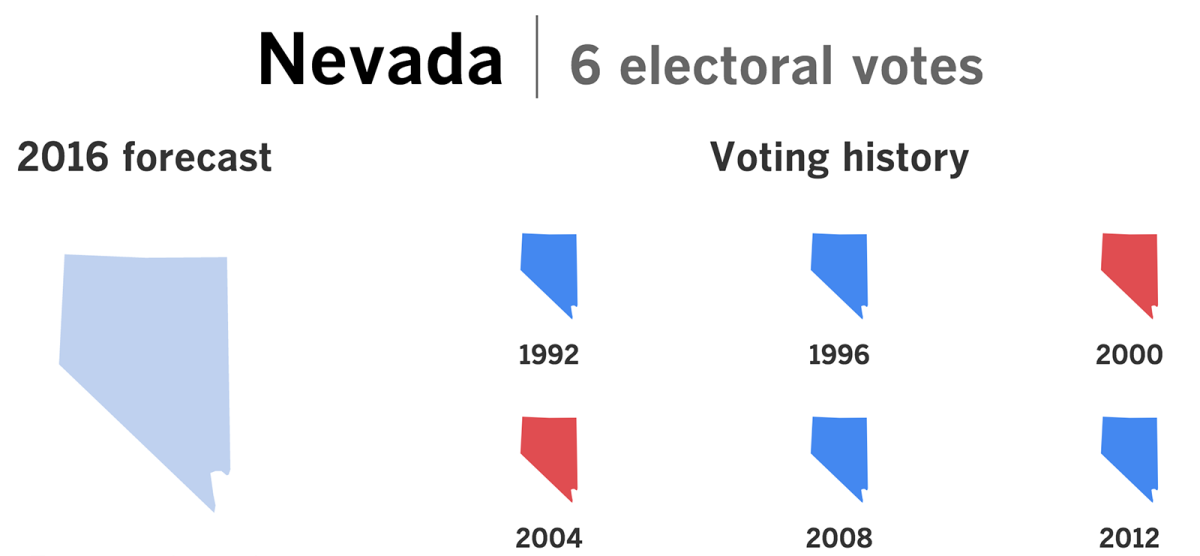
Trump’s name already looms over Las Vegas from the candidate’s hotel, but winning the state is another matter. Nevada is home to an increasing number of Latinos who have been turned off by Trump’s hard-line immigration stance and his derogatory comments about Mexicans and other immigrants.
The Clinton campaign has invested heavily in a state organization to balance out the enthusiasm among Trump supporters. Voters here have a strong anti-establishment streak, something the New York businessman and first-time candidate could turn to his advantage.
Democrats have regarded Georgia like a big, fat, juicy peach, just waiting to ripen and fall. Their expectation has been the increased clout of the state's growing black, Latino and Asian populations would turn this reddest of states blue sometime over the next decade or so.
Some hope that day could come this year if Trump repels enough minority and women voters. However, it’s less than an even-money bet for Clinton.
Donald Trump’s steady slide in the polls has made this normally Republican state vulnerable to turning blue this year. He’s lost the support of Sen. John McCain, and he was never endorsed by the state’s other senator, Jeff Flake.
Hillary Clinton’s campaign is trying to take advantage of a rare opportunity, with appearances by First Lady Michelle Obama, Vermont Sen. Bernie Sanders and the candidate herself. A Democratic victory would likely rely heavily on Arizona’s growing number of Latinos, who have heavily favored Clinton over Trump.
Twitter: @chrismegerian
ALSO:
Here's what we know so far about voter fraud and the 2016 elections
Red vs. blue states: Check out our interactive Electoral College map
Get the L.A. Times Politics newsletter
Deeply reported insights into legislation, politics and policy from Sacramento, Washington and beyond. In your inbox twice per week.
You may occasionally receive promotional content from the Los Angeles Times.








